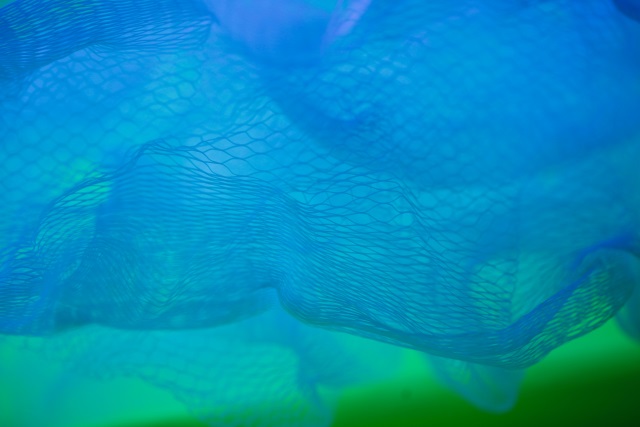The project aspires to enhance the EU-China cooperation in promoting urban agriculture for food security, resource efficiency and smart, resilient cities. Throughout SiEUGreen’s implementation, EU and China will share technologies and experiences, thus contributing to the future developments of urban agriculture and urban resilience in both continents. The project contributes to the preparation, deployment and evaluation of showcases in 5 selected European and Chinese urban and peri-urban areas:




Innovative greenhouse technologies
(example: https://www.bbbls.net) implemented to improve the energy efficiency, special insulation to prevent heat loss, or to run the greenhouse using renewable energy: heat greenhouse with stored solar heat, provide extra light and CO2 environmentally through biogas, use LED light to save energy.

Ways controlling the climate inside the greenhouse are neither energy efficient nor high tech in order to provide optimal plant growth conditions: light from electricity, heating with electricity or fossil fuel, cooling through electricity driven ventilation, opening windows, shading and damping, liquid CO2 or fossil fuel combustion for CO2 enrichment.
https://stuppy.com/wp-content/uploads/2015/02/Greenhouse-Technical-Specifications.pdf

Polytunnel is usually simpler and smaller with galvanized steel hoops covered tightly with clear or diffused plastic, which is easy to build with similar functions like a normal greenhouse.
https://www.premierpolytunnels.co.uk/blog/polytunnel-or-greenhouse-what-to-consider-when-deciding/

Mobile garden is a collection of vegetables, flowers, bushes and even trees that is movable with the aim of education, creativity, and neighborhood engagement.
https://balconygardenweb.com/moveable-garden-diy-mobile-garden-ideas/

Using soil as the growth median to anchor plants and regulate water, oxygen and nutrients that are essential for plant growth.
https://extension.umaine.edu/gardening/manual/soils/soil-and-plant-nutrition/

Grow plants in water that meet all necessary conditions for optimal plant growth: essential nutrients and oxygen.
https://www.explainthatstuff.com/hydroponics.html

Aquaponics integrates plants and fish in one system that fish wastes provide nutrients for vegetable growth, vegetables clean the water for fish in aquaculture through utilizing the nutrients for their own growth.
https://en.wikipedia.org/wiki/Aquaponics

Paper is used as the growth media serving similar functions like soil except providing any nutrients. Vegetables grown on paper are much less likely to be contaminated by soil born microorganisms.
https://www.youtube.com/watch?v=UqrXTbIQmfc

It is to make a balcony like a garden by growing plants there. One has to consider the community rules, the size, wind, light and water accessibility before starting designing the garden with your favorite plants.
https://www.growveg.com/guides/grow-an-edible-garden-on-your-balcony/




Digestates are organic residues from biogas production, which are rich in mineral nitrogen, almost exclusively as ammonium (NH4+), and they also contain some residual organic matter with some organic N. Digestates also contain other nutrients in a ratio that is quite balanced compared to the plant’s need. Nitrification by biofiltration is recommended before application to plants grown with little or no soil and/or little natural microflora in the soil.

Struvite precipitation from concentrated wastewater has been found to be a promising recovery technique because the recovered precipitate can be used as a slow release P and N fertilizer. The precipitation of struvite take place in an equimolecular concentration of magnesium, ammonium and phosphate. Addition of magnesium is required to maintain the equimolecular ratio. Precipitation of struvite from biogas digestate, such as chemical precipitation including sea water, electrocoagulation, ion exchange method and biomineralization, has been evaluated.

Insect larvae can be cultivated for feed or food. Many larvae are able to live on a wide variety of food sources as e.g. food waste from households to support with proteins and energy. Examples of Insect larvae cultivated for feed are black soldier fly (Hermetia illucens) and mealworm (Tenebrio molitor). The rearing of the larvae, grown in boxes, are fed with waste with a suitable combination of protein and energy. There is a large increase in R&D for this technology in combination with fish fodder (aquaponic systems) the last five years. In vermicomposting, worms can be harvested as feed.

Many liquid waste streams, such as human urine, contain ample nutrients. To reduce smell and increase storability oxidation of ammonium to nitrate (nitrification) can be an option. Nitrification also decreases pH, which further stabilises remaining ammonium. The project has tested two types of biofiltration reactors for oxidation of urine in lab scale. High-strength nitrate-rich nutrient solutions, free of smell, were achieved, but the oxidation process is sensitive and need more investigations before upscaling.

Composting is aerobic decomposition of organic material During composting organic compounds are broken down, nutrients made more available and CO2 released. The result is mass loss and a stabilised product that smells earth-like. Usually the temperature also rises for a period so that most pathogens and weed seeds are killed. To compost urban food waste in an insulated reactor it is usually necessary to mix it with other waste products (e.g. garden waste, wood chips) to get enough air into the mixture and also get a more optimal C:N ratio.

Vacuum toilets are flush toilets based on a non-water transportation system. Vacuum toilets are connected to vacuum sewers, which removes toilet waste with a minimal amount of water (0.5 to 1.2 litres). The main components include the toilet with vacuum valve parts, vacuum sewers, the vacuum generation unit and monitoring and control components. Vacuum toilets have gained interest as part of source separating sanitation system where water savings, and nutrient and energy recovery is important. Vacuum systems are robust and reliable today. However, the systems are dependent on electricity supply and require correct construction, operation, maintenance and damage control.

Technologies for separation of the nutrient rich urine from wastewater flows have been applied for thousands of years. Types of urine diversion devices include urinals, urine-diversion flush toilets and urine-diverting dry toilets. Most urine-separating flush toilets in Europe differ from ordinary toilets in that the bowls have two sections. A front bowl for urine collection and rear bowl for faeces and toilet paper. There have been challenges with the separation and the cleaning of these toilets. New types of urine-separating toilets have recently been developed, which looks like ordinary toilets, including the toilet bowl, as eg. the toilet “Safe” from Laufen (http://urinetrap.com)

A dry or composting toilet collects human excreta without the use of water. Such toilets can be equipped with urine diversion either in the form of a urine diverting toilet bowl or a urine diverting insert in bench type toilets. There is a variety of designs; toilets with exchangeable compartments, multiple compartments or with one compartment. In a solar assisted dry toilet, the process is enhanced by utilizing the sun to provide heat for the composting/desiccation/ hygienization processes. Small PV panels can be used to power fans that enhance air flow that can help reduce smell as well as evaporation of excess liquid.

Greywater treatment can include biofiltration as the main stage, in addition to filterbed or constructed wetlands. These filter systems can also be combined to achieve removal of nutrients (P and N). Greywater treatment by using single-pass biofiltration in porous media and intermittent loading (by pump and dosing systems) are well known and widespread technology in Nordic countries for small wastewater flows. The filter media are usually sand, gravel or fabricated media, such as light-weight aggregates. Grey water filter systems as wetlands with vegetation can be integrated as part of landscape in the urban settings.

A compact biological aerated filtration (BAF) system can provide reduction of organic matter, suspended solids and microbiological contaminants from the greywater and full nitrification. The membrane bioreactor (MBR), which combines biodegradation with membrane filtration for solid liquid separation, has been regarded as an innovative technology for greywater treatment due to its process stability and its ability to remove pathogens. The crucial point for the successful operation of these biofilter systems is to control and maintain a healthy biomass on the surface of the filter. Most systems are still in a development stage.

Green walls are engineered systems which are designed and constructed to utilize the natural processes operating as a biofiltration system and provide treatment mostly through physical and biochemical processes, as the water percolates vertically down through the filter media. Integration of building infrastructures as a component of on-site greywater treatment with green wall technology provides many environmental and financial benefits (aesthetic, biodiversity, micro-climate, food production, thermal insulation), as the green wall vegetation obtain water and nutrients from the system.

A green roof of a building is partially or completely covered with vegetation and a growing medium, planted over a waterproofing membrane. It may also include additional layers, such as a root barrier and drainage and irrigation systems. The depth of growing media is depending on vegetation type. Trees, shrubs and herbs need thick soil layers while Sedum or mosses need thin soil layers. Green roof adsorb stormwater and temporarily stores it. Including LWA media increases the water retention capacity and insulation.

A green wall is partially or completely covered with greenery that includes a growing medium and an integrated water delivery system. A green wall is also known as a living wall or vertical garden. It provides insulation to keep the building's inside temperature consistent. Green walls may be indoors or outside, freestanding or attached to an existing wall, and come in a great variety of sizes.

Constructed wetlands and ponds are engineered systems using vegetation, soil, and organisms to treat stormwater. The systems can remove a range of pollutants, such as organic matter, nutrients, pathogens, heavy metals from the water. Most stormwater treatment wetlands are surface flow systems. The planted vegetation plays an important role in contaminant removal. Wetlands can also be part of treatment ponds and open channels/streams.

Bioretention/rain garden is the process in where contaminants are removed from stormwater runoff. Stormwater is collected into constructed depressions within the landscape, which consists of a grass buffer strip, sand bed, ponding area, organic layer or mulch layer, planting soil, and plants. Runoff passes first over or through a sand bed, which slows the runoff's velocity, distributes it evenly along the length of the ponding area. Water filters through soil layers before entering the groundwater system by infiltration, or a drainage system. Infiltration of stormwater from roofs and parking areas can also be infiblueItemltrated in local soil in park turfgrass areas.





Biogass (methane) is produced from toilet waste (blackwater) and organic household waste. The biogas is used for heating and electricity production. Four potential biogas reactors with some differences in process design have been evaluated: the Upflow Anaerobic Sludge Bed (UASB) system, the Upflow Sludge Blanket Anaerobic Baffled Reactor (USBABR), the Anaerobic Membrane Bioreactor (AnMBR), and the Antec Biofilm (AB) system.
The UASB reactor is developed at Wageningen University in The Netherlands. It is based on an upflow mode and a three-phase separator, which enables the reactor to separate gas, water, and sludge mixtures under high-turbulence conditions. The UASB reactor is the only reactor tested and proven with blackwater and organic household waste.
The Upflow Sludge Blanket Anaerobic Baffled Reactor (USBABR) is a new prototype reactor developed at the University of Southern Norway (Porsgrunn, Norway) in collaboration with Ecomotive AS and tested at NMBU on source-separated blackwater. No experience yet at full-scale with source-separated blackwater mixed with organic household waste.
AnMBR is a combination of anaerobic digestion and membrane bioreactor technolog, intensively studied due to high effluent quality. The main drawbacks of AnMBRs are the low membrane flux, membrane fouling, and high capital and operational costs, which still hinder AnMBR application.
The Antec system is a “plug flow” reactor with biofilm technology. The reactor is divided into several compartments as the biomass flows through the reactor with residence time 7-10 days. The active biofilm formed at the surface supports the process in the production of methane. The biogas digestate is a liquid product from the process, rich nutrients.

Borehole thermal energy storage (BTHS) means that solar energy collected in the summer is used to heat a volume of sediment or rock underground. The stored heat is retrieved during winter and used for heating of the building. BTES is under investigation for use in Campus Ås showcase. Hydrogeological data are collected to estimate the potential for underground heat storage. BTES have potential to reduce the heating costs by up to 90%.

Ground source heat-pumps (GSHP) means that heat is extracted from a borehole using a heat pump thus the temperature in the borehole is lowered when heat is extracted. GSHP can give about 30% reduction in heating costs.

Photovoltaic panels (PV) have been considered and have been found both uneconomical and impractical for supply of electricity for the apartment building in Campus Ås. Thus solar panels have a limited use in the Campus Ås showcase. It is under consideration to use solar panels to supply the electricity needed for the aquaponic system in the Hatay showcase.

Solar collectors for heating water are being considered in connectiotion to BTHS.

When biogas is burnt electricity can be generated using a thermoelectric generator (TEG). A thermoelectric generator (TEG), is a solid state device that converts heat flux (temperature differences) directly into electrical energy
https://en.wikipedia.org/wiki/Thermoelectric_generator
.
The TEG consists of a bimetal strip that is cold on one side and warm on the other, thus has no moving parts and is robust and suited for smaller decentralized installations. It is the plan that the electricity generated is used for LED lights in the greenhouse in Campus Ås showcase. Currently the efficiency of a TEG is low and maximum 10% of the energy is converted to electricity.

